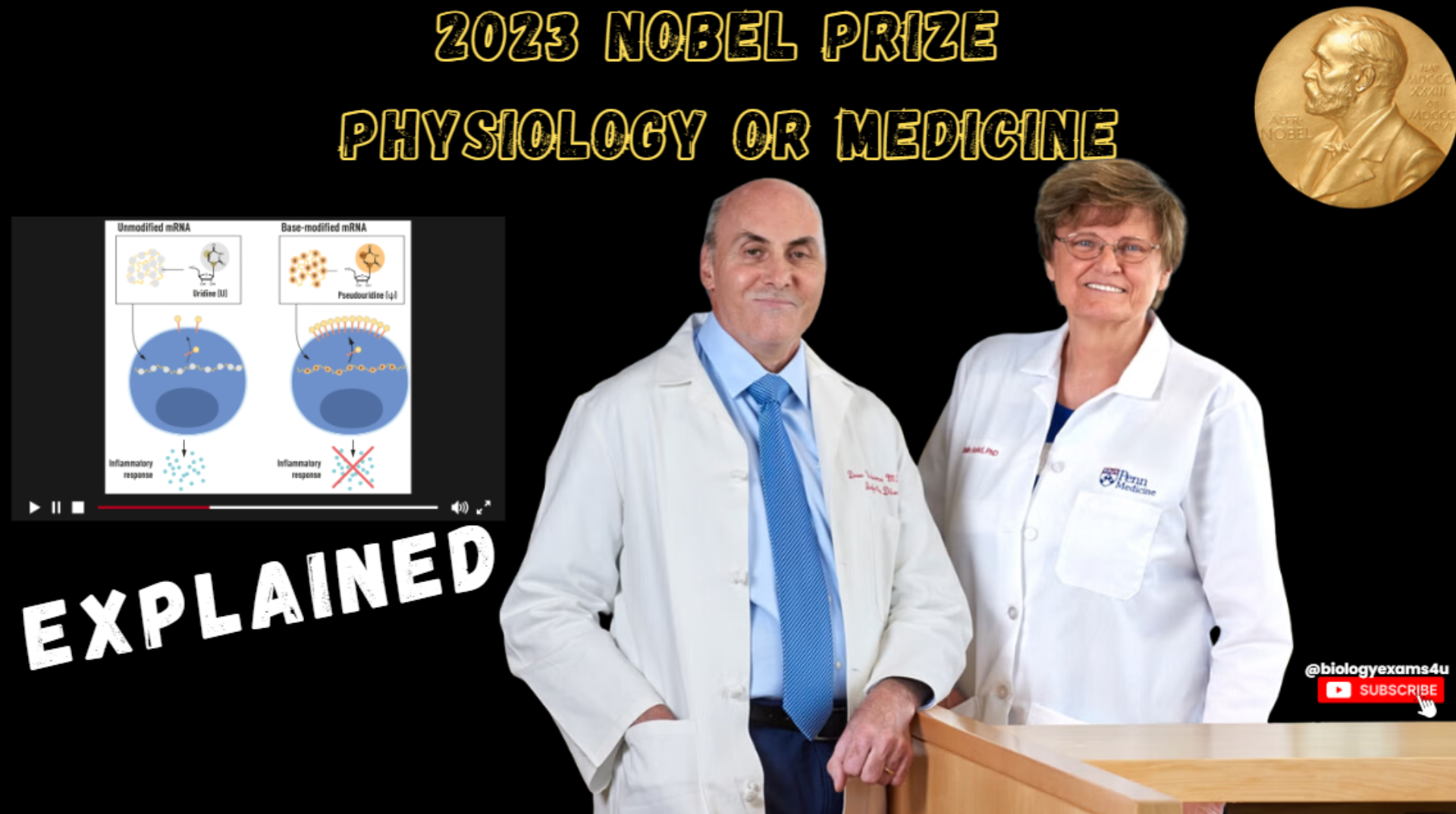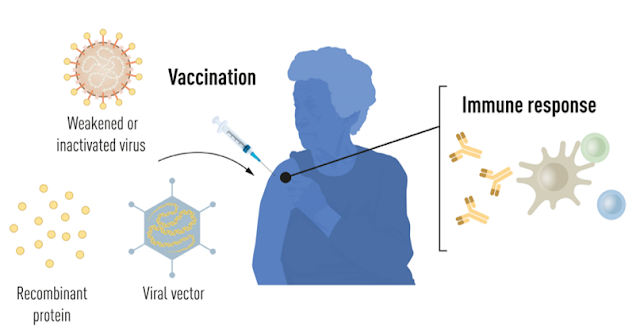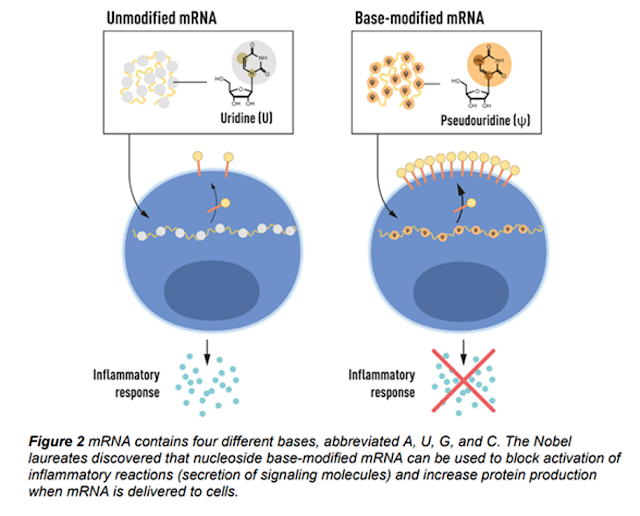2023 Nobel Prize in Physiology or Medicine was jointly awarded to KATALIN KARIKÓ And DREW WEISSMAN “for their discoveries concerning nucleoside base modifications that enabled the development of effective mRNA vaccines against COVID-19” Watch our video here.
In this post, let us understand their work?
Their discoveries have fundamentally changed our
understanding of how mRNA interacts with our immune system and were critical
for developing effective mRNA vaccines at an unprecedented rate against
COVID-19 pandemic, one of the greatest threats to human health in modern times.
Background
What was the Vaccination strategy before the COVID19
pandemic?
Vaccination stimulates the formation of an immune response to
a particular pathogen. This gives the body a head start in the fight against
disease in the event of a later exposure.
Parts of the viral genetic code, usually encoding proteins found on the virus surface, are used to make proteins that stimulate the formation of virus-blocking antibodies.
accines against the hepatitis B virus and human papillomavirus
Mode 3: parts of the viral genetic code can be moved to a harmless carrier virus, a "vector." When vector vaccines are injected, the selected viral protein is produced in our cells, stimulating an immune response against the targeted virus. vaccines against the Ebola virus
Limitations of these strategies
- All these modes requires large-scale cell culture. This resource-intensive process limits the possibilities for rapid vaccine production in response to outbreaks and pandemics.
Why mRNA Vaccines came up as a possible solution?
During the 1980s, efficient methods for producing mRNA
without cell culture were introduced, called in vitro transcription. There were
many roadblocks for mRNA technology based vaccines.
What were the limitations of mRNA based vaccine?
- In vitro transcribed mRNA was unstable
- Very difficult to deliver, requiring the development of sophisticated carrier lipid systems to encapsulate the mRNA.
- Moreover, in vitro-produced mRNA gave rise to inflammatory reactions.
Hungarian biochemist Katalin Karikó, was devoted to
developing methods to use mRNA for therapy. But found it difficult to convince
research funders to pump money into mRNA based therapeutics. Her colleague at
the University was immunologist Drew Weissman. He was interested in dendritic
cells, involved in immune surveillance and the activation of vaccine induced
immune responses. They worked together in finding out how different RNA types
interact with the immune system.
Karikó and Weissmans work
Karikó and Weissman noticed that dendritic cells recognize in vitro transcribed mRNA as a foreign substance, which leads to their activation and the release of inflammatory signaling molecules. But mRNA from mammalian cells did not give rise to the same reaction.
They pose this question.Why the in vitro transcribed mRNA
was recognized as foreign?
And realized that some critical properties must distinguish
the different types of mRNA.
They knew that nucleoside bases in RNA from mammalian cells
are frequently chemically modified, while in vitro transcribed mRNA is not.
The next question?
Is the absence of altered bases in the in vitro transcribed
RNA causes unwanted inflammatory reaction?
To investigate this, they produced different variants of
mRNA, each with unique chemical alterations in their bases, which they
delivered to dendritic cells. The results were striking: The inflammatory
response was almost absent when base modifications were included in the mRNA. The
results were published in 2005.
Later in 2008 and 2010, they showed that the delivery of mRNA
generated with base modifications significantly increased protein production
compared to unmodified mRNA. Their studies confirmed that base modifications
can reduce inflammatory responses and increase protein production, thus clearing
the major obstacles associated with mRNA based therapeutics.
Later Several companies attempted mRNA base modification for
vaccine productions to develop vaccines against Zika and MERS. After the
outbreak of the COVID-19 pandemic, two nucleoside base-modified mRNA vaccines
encoding the SARS-CoV-2 surface protein were developed at record speed.
Protective effects of around 95% were reported, and both vaccines were approved
as early as December 2020. More than 13 billion COVID-19 vaccine doses have
been given globally. The vaccines have saved millions of lives. Karikó and Weissman's fundamental discoveries of the importance of base modifications in
mRNA, contributed in developing effective mRNA vaccines during one of the
biggest health crises of our time.
Reference: www.nobelprize.org



